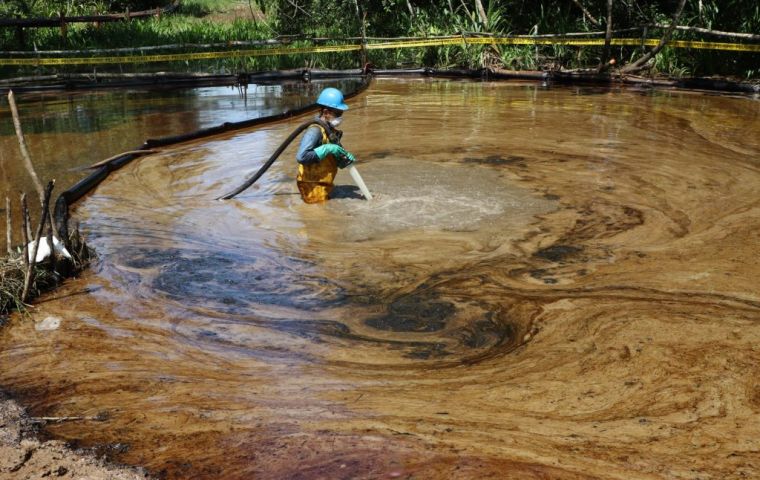
QUITO, Feb 4 (NNN-MERCOPRESS) — An oil spill in Ecuador in late January has been spreading over the past few days throughout the Yasuní area reaching unforeseen proportions, it was reported Wednesday.
After a spill of 6,300 barrels of crude in the Amazon due to a break in an oil pipeline in the area of the Coca River eroded by deficiencies in the construction of a Chinese dam, authorities are beginning to speak of a “major environmental disaster.”
Ecuador’s Environment Minister Gustavo Manrique said an oil slick had been reported in Añangu, in the Yasuní National Park. Local indigenous communities had already spoken of a spill which has allegedly affected at least 300 kilometers, from the area where the pipeline broke to the entrance to the Yasuní intangible area.
The Environment Ministry had already reported the spill had affected over 21 square meters including the area of the Cayambe Coca National Park, known for being the habitat of several protected species and recognized because the Reserve protects one of the country’s main water supplies.
The oil has contaminated the water and food sources of hundreds of indigenous communities. Women and Health of the Confederation of Indigenous Nationalities of the Amazon (Confeniae) leader Nemo Andi said the latest oil spill affected at least 60,000 people, and animals such as fish which are a part of the indigenous diet.
So far, some 5,300 barrels of crude have been recovered by the company. Cleanup work in the area continues. On Jan 28, the Oleoductos de Crudos Pesadoswas reported to have broken up after a two-meter rock fell on the pipe. The area is already deteriorated following the unwanted consequences from the construction of a Chinese dam.
Yasuní Park officials have already asked Petroecuador to provide the necessary materials to stop the oil spread.
Yasuní is considered one of the most biodiverse sites in the world. It comprises the Protected Area of the Yasuní National Park, the Intangible Zone, the Buffer Area and the Oil Exploitation Zone.
According to information from the Environment Ministry, it is also the largest protected area in continental Ecuador. It is located 250 kilometers from Quito in the heart of the Amazonian tropical rain forest. The Yasuní National Park is also home to the Waorani and Kichwa indigenous communities, while in its remote forests the Tagaeris and Taromenanes live in voluntary isolation.
Ecuador’s Constitutional Court has already ruled many articles of Decree 751, which allowed exploitation in a buffer strip of the intangible zone in the Yasuní National Park, were unconstitutional.
Environment Ministry sources said the Oleoductos de Crudos Pesados company has 15 days to defend itself before administrative and civil legal actions are undertaken.
Oil spills in Ecuador’s Amazon area are not unheard of, with 899 of them having been recorded between 2015 and June 2021. — NNN-MERCOPRESS




